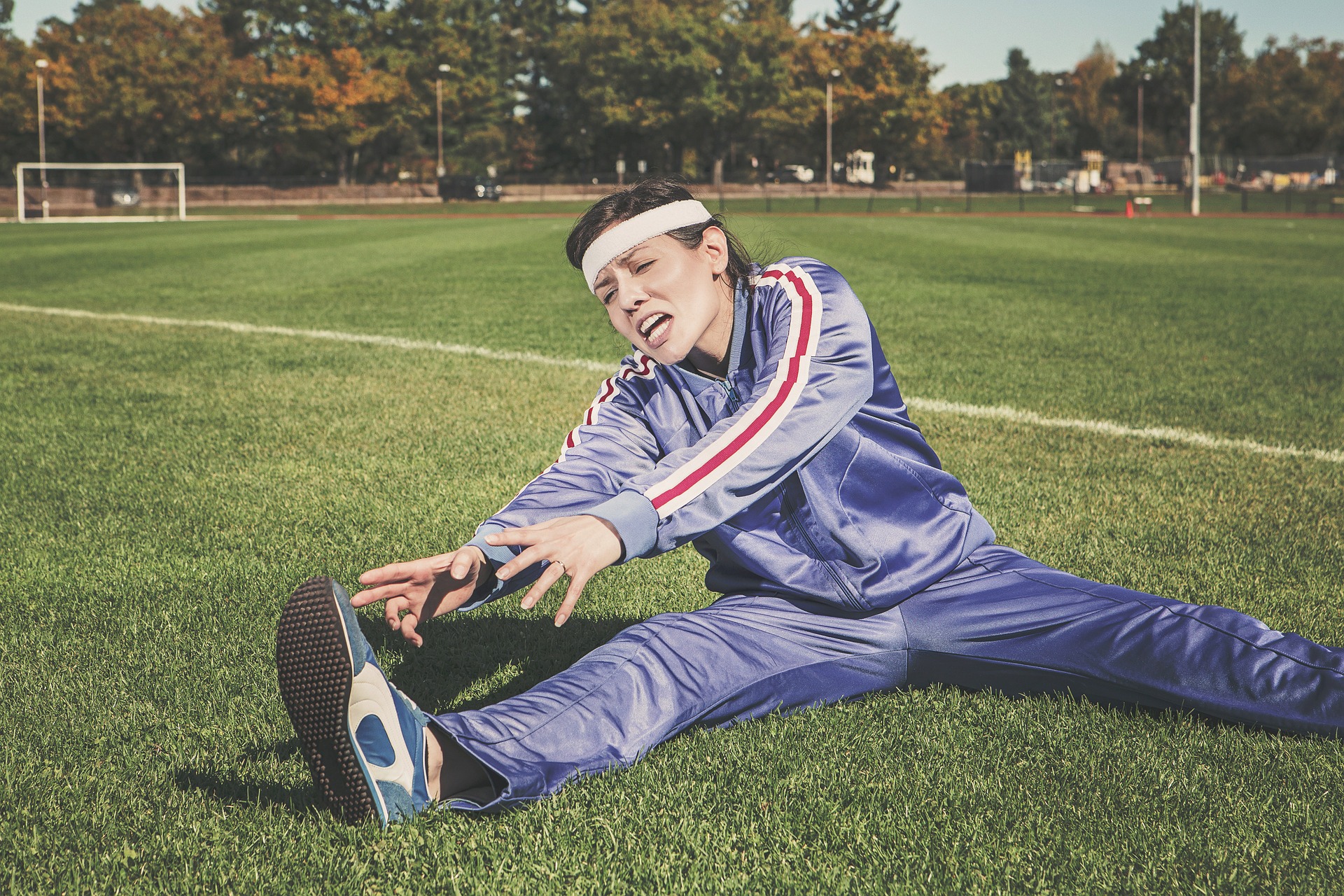
There are many types of training, which are aimed at different muscle groups. But if you want to succeed in developing the circulatory and respiratory systems and thin down quickly, then there is effective training, called circuit training. Basically, this method of resistance training implies the performing of sequences (4-10 exercises, performed for 30 to 90 seconds each) with a short interval between them (30-60 sec). This training brings certain benefits to endurance and strength. If you want to boost your exercise techniques, take a look at the BetterMe WorkOut app for increased results.
So, do you want to know what advantages it has? Are you interested in getting a sample of a circuit training program? Are you eager to find out about the main types of circuit training? In this article, we’ve assembled this information.
Features Of Circuit Training
This highly effective training combines cardiovascular fitness and resistance training. Morgan and Adamson at the University of Leeds first developed circuit training in the 1950s, since then it has been used as a method to develop general fitness. Thus, its focal point is to prepare the whole body (cardiovascular system, joints, and ligaments) to weight training. Therefore, it has distinctive features:
- Multi-joint basic exercises for large muscle groups are used. They make up the future basis for the development of the strength of the athlete.
- For a greater efficiency and safety, all exercises should be executed at the gym at least at the most basic level of preparation. Until the technique of performing basic movements with free weights is set, only exercise machines can give you a full return during the exercise.
- All drills are performed in a multi-repeat mode. It contributes to the further muscle growth.
- Circuit training is held 2-3 times a week, and each time the sequence of working out muscle groups is changed. For example, if you start a session with back training, then the second should be focused on chest training, etc.
- For each muscle group, only one exercise is used.
Advantages Of Circuit Training
This effective training is good for those, who want to work on major muscle groups, cultivate endurance, lose weight and achieve tangible results in a short period of time. However, if you focus on it, you should pay attention to the hydrogen buildup. If it’s not removed, then you do the weights at the different intensity, the effort may be the same, but intensity changes.
Cardiovascular Endurance
To work out effectively, you should have a solid base of endurance, and this endurance is provided by circuit training, which keeps your heart rate elevated for longer and the cardiac muscle becomes stronger. Additionally, it improves your respiratory system, that is why your aerobic capacity (VO2 Max) is increased, so you may train longer with the same intensity.
Muscular Strength
Functional strength is important. If it’s weak, then you lose the ability to lift the heaviest weight during the bench press, you increase the risk of injury because you don’t work on this factor and your performing ability is decreased. Generally, for enhancing the muscular strength, you should use low weight and high repetition exercises. For instance, use forms of resistance training: body weight, machine weights, free weights.
Body Composition
Scientists reckon that circuit training increases growth hormone production, which leads to greater fat loss and it helps you to build muscles, eventually, stored fat is reduced and the body composition is adjusted. Dr. Michael Smith states that circuit training helps you to lose weight along with a healthy diet. As a type of interval training, it boosts up the amount of oxygen the person consumes after the set, therefore, it increases the number of calories the human burns throughout the day.
What Are The Types Of Circuit Training?
If you ask: “What is the best workout?”, there won’t be a universal answer because each type has its own benefits. There two basic types of circuit training: horizontal and vertical training. Horizontal training denotes that one type of exercise is performed before a person moves to another set of exercises. Vertical training signifies that one type of the exercise is performed before returning to it for the second time.
These drills are aimed at specific body parts. The major types of this training are the following:
Muscular Endurance Circuit
This type encompasses exercises for the lower and the upper part of the body. Also, there are exercises, in which work opposing muscle groups (e.g. quadriceps and hamstrings). Exercises are done in 30 seconds, 2 circuits, rest is 15 seconds.
Exercises for the upper section:
- Dumbbell Exercises
It works on essential muscles with alternating shoulder presses, lateral raises triceps extensions, and biceps curls.
- Push-Ups
Reverse push-ups are good for shoulders, legs, the back, and chest. Wide push-ups (spread your hands wider than the shoulder width) are also highly effective.
- Bench Dips
Through the bending of the lower body, work the major muscle groups (forearms, shoulders, chest, triceps) so that you develop the upper body strength and tone the muscles.
Exercises for the lower body:
- Cable Leg Kickbacks
This drill is aimed at gluteal and hamstring muscles, it strengthens them and develops shapely legs.
- Supermans
During this exercise, your abs are engaged and the back is strengthened. Therefore, you have a strong core.
- Dumbbell Exercises
Do sets of squats, lunges, and deadlifts, they work well for the lower body. You may do either an increasing pyramid (start with light weights and then go for heavier weights) or a decreasing pyramid (start with heavy weights and change to light weights).
Cardiovascular Endurance Circuit
This type includes dynamic muscles, which are performed with various muscle groups. It incorporates one-spot (knee-lifts) and off-the-spot exercises (shuttle runs). The duration of exercises is 30 seconds, 2 circuits, the rest is 10 seconds. Recovery between circuits is 90 seconds.
- Jump Rope
While doing it, you strengthens the heart and cultivate endurance. Also, you put a stress on knees, hips, and ankles. Don`t forget about the best shoes for jump rope. You may go for a forward jump, backward jump, side-to-side jump.
- V-step
It makes the heart and lungs work at an increased rate. A more efficient work of the heart means your muscles get more oxygen. They have more stamina, grow and recover quicker.
- Knee lifts
This functional abdominal exercise boosts the strength throughout the core. Your muscles work in conjunction with hips, shoulders and the back. Also, it keeps your heart rate elevated and you burn more calories. On top of that, it improves postural support and coordination.
Combined CVE and ME Circuit
One of the goals of circuit training is developing the muscle endurance and the cardiovascular endurance simultaneously. So, the merit of this type is that different exercises are combined and you may alternate them. Compound exercises target at big muscle groups. They are performed for 30 seconds, the break is 10 seconds, 2 circuits, recovery is 90 seconds.
- Overhead Squat
It works on your core, arms, legs, shoulders, and prevents weakness in the upper back.
- Jumping jacks
They are good for abdomens, deltoids, calves. Also, they increase the metabolic rate, improve stamina, stability, and circulation.
- Lunges
Mainly, it targets the quadriceps and the glutes, but it hits the hamstrings, calves, and core as well. It increases hip flexor flexibility, gives a better core stability and improves glute activation.
Anaerobic Circuit
This type fits those, who have a good level of fitness. It has short duration exercises with maximum intensity and is aimed at developing speed, power, and endurance. The feature of this type is that drills are explosive in nature, and the ratio of time off to time on is 2:1 or 3:1 depending on the anaerobic demands of the sport. Usually, two circuits are performed, recovery is 4 minutes.
- Treadmills
This exercise brings things to the next level. It tones the calves, quadriceps muscles and buttocks, keeps joints flexible. Your heart grows stronger and it helps you lose weight (run for 20 minutes at 6mph and you’ll burn 229 calories).
- Burpees
They work on the entire body (triceps, core, legs), improve the skeletal muscle endurance and build definition.
- Fast knees
The drill brings benefits to quadriceps, calves, glutes. Besides, it improves flexibility and running pace.
Sport-specific Circuit
The exercises in this type should meet all the requirements of a sport. Sessions are designed according to chronological and training age, the fitness level and the goal of the athlete. The focus is that that exercises should mimic as much as possible the actions of the body during participation in a given sport. Time on – 30 seconds, me off – 15 seconds, 2 circuits, recovery is 2 minutes.
- Split jump
This plyometric exercise will help you to strengthen legs and glutes and it provides cardiovascular benefits.
- Bent-over row
It has certain strength benefits (increased muscle mass and bone health), the targeted muscle groups are the back, the latissimus dorsi, and rhomboids. Also, Also, biceps, muscles in the shoulders, legs, the abdominal and lower back muscles are also engaged.
- Sit-up
This one is great for a full body workout. It hits your abs, also connecting stabilizer muscles (hip flexors, leg and chest muscles) are involved.
Circuit Training Workouts
The American College of Sports Medicine recommends resistance training two to three times a week. For adequate recovery, rest between circuit training should be 48 hours. If you’re a beginner, do one set two times a week. For advanced athletes, three times a week or two sets are preferred.
Though it’s recommended to do a circuit workout at the gym with dumbbells, you can perform this training with bodyweight. Here are two samples of programs with the bodyweight and equipment.
Circuit Training Workout (Bodyweight)
Duration: 6 weeks.
Exercises:
- Squat jumps
- Push ups
- Lunges
- Crunches
- Burpees
- Bench dips
- Squat thrusts
- Supermans
The duration of each exercise in the first week is 30 seconds, the rest between sets is 60 sec, rest between circuits is 3 minutes, the number of circuits is 2. Then the duration of exercises becomes 45 seconds, and the number of circuits is increased from 2 to 3.
Circuit Training Workout (Dumbbells and Medicine Balls)
Duration: 6 weeks
Exercises:
- Half squats
- Seated shoulder presses
- Reverse ab curls
- Push ups
- Med balls obliques
- Med ball lunge crossover
- Slams
The duration of each exercise in the first week is 30 seconds, rest between sets is 60 Sec, the rest between circuits is 3 minutes, the number of circuits is 2. Then the duration of exercises becomes 45 seconds, and the number of circuits is increased from 2 to 3.
Before implementing these programs into your routine, take some precautions:
- Start off slowly if you’re a beginner. A level of fitness matters.
- Always do a warm-up and cool-down. Your body should be ready for the session, so start with stretching.
- Flexibility training should be a part of your workout because your muscles and joints should be flexible.
- Perform exercises from most neurologically demanding to the least. Don’t do the hardest exercises when you are the most fatigued. For example, doing biceps curls before squats is wrong.
- Consider safety and don’t do the overhead squat as the last exercise.
Conclusion
Thus, circuit training is versatile: it’s heart-pounding and time-efficient. It develops diverse aspects of strength and conditioning. You may alter circuits according to your goals (specific body area, a particular aspect of sport), and implement various elements to gain the desired result.








